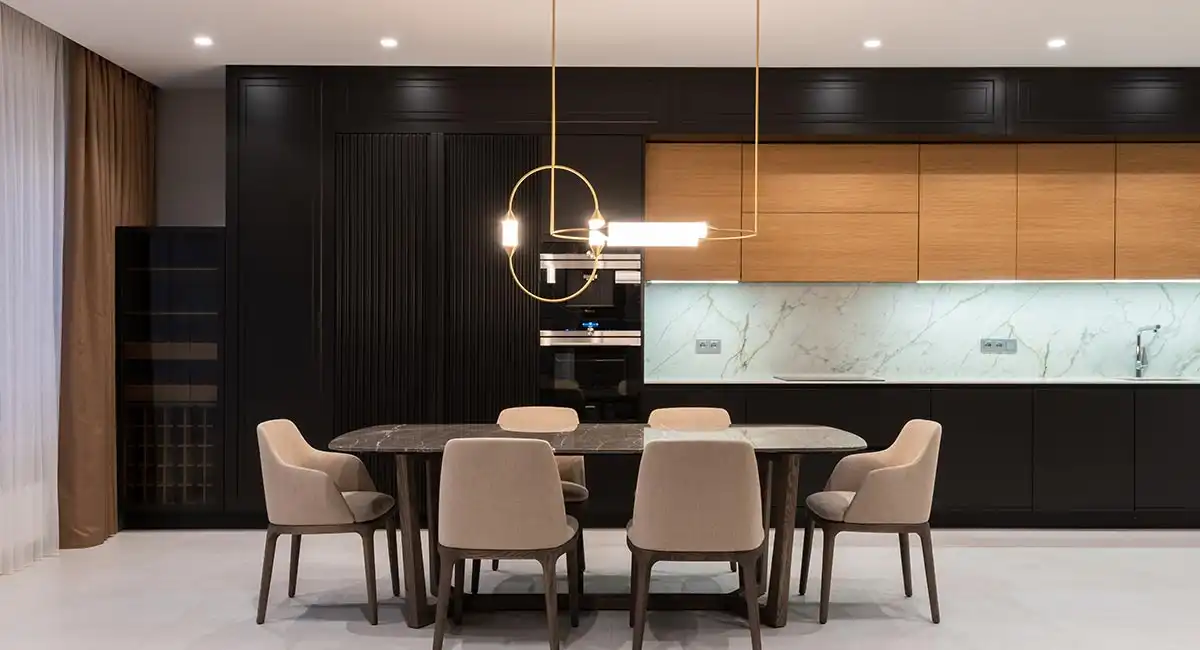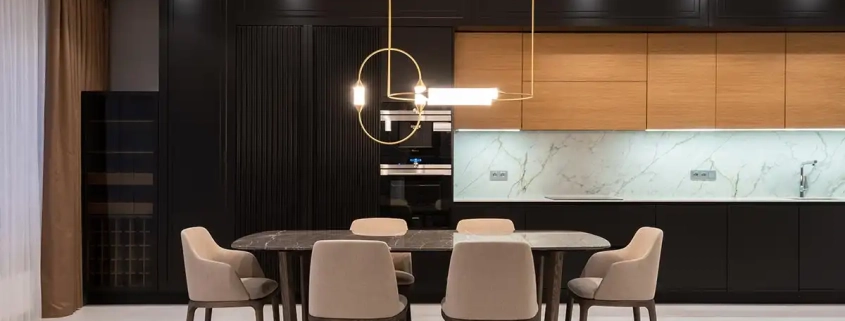4 Environmental Considerations When Using Decorative Wall Panels
4 Environmental Considerations When Using Decorative Wall Panels

If you are considering using decorative wall panels in your home, it is important to consider the environment in which the walls are being hung. This is especially true if you plan to use the panels in a child’s room. Using panels with non-toxic materials will help to ensure that children have a safe place to play.
Phthalates
Phthalates are a group of synthetic, semi-volatile organic compounds that are used in plasticizers, fragrances, personal care products, household cleaners and food packaging. They are also known to affect the health of children.
Since the advent of the Consumer Product Safety Act, manufacturers have been prohibited from using certain phthalates in children’s products. Although phthalates are used in many products, they are not yet regulated in building materials.
In China, phthalates are found in a variety of synthetic decoration materials. These materials include plastic toys, soft polymers, wall papers and PVC flooring.
Children are particularly susceptible to the effects of phthalates. This is due to the fact that they are more likely to ingest contaminated dust. Because of this, it is important to know how phthalates get transferred from one object to another.
The US Consumer Product Safety Commission (CPSC) is required to investigate and report on the presence of phthalates in consumer products. Toys that contain DEHP, for example, were voluntarily recalled by toy manufacturers in the US.
There are some phthalates that have been shown to be carcinogens and asthmagens. However, the majority of phthalates have low concern. Similarly, the European Union has issued warning labels for phthalates.
One of the first phthalates to raise red flags was di-n-octyl phthalate (DiNP). DiNP was later linked to male genital birth defects.
Another phthalate that raised concerns was diethyl phthalate (DEHP). It has been linked to sperm counts and male genitalia deformities in rodent trials.
A number of academic studies and policy reports have voiced concern over phthalates. Several Prop 65 settlements have been reached for phthalates in a variety of products.
Target, Walmart and others have also launched initiatives to eliminate toxic chemicals. However, the regulatory process for consumer products is slow.
Heavy metal stabilizers
Heavy metal stabilizers have been around for many years, but recent studies have discovered that they are responsible for a number of health hazards. These include neurodevelopmental problems, reproductive issues, thyroid disruption, and cancer. The good news is that this isn’t the end of the story.
Some manufacturers have come up with ways to mitigate the hazards of heavy metals in decorative wall panels. For instance, Morton International has developed Advaflex, a heat stabilizer technology that uses only organic compounds. This product is a low-cost and environmentally friendly alternative to traditional metal stabilizers.
In fact, this Advaflex technology is so effective that it’s capable of reducing the amount of primary metal stabilizer needed by up to 75%. It’s also compatible with a wide variety of PVC additives, including low-level metal carboxylates. Moreover, it is hydrolytically stable and oxidatively safe.
Although the Advaflex has a wide range of applications, it is targeted at the flooring and caled film industries. Nevertheless, it is also a cost-effective product that should appeal to all parties involved.
One of the most interesting Advaflex gimmicks is the LM-300 system, which allows users to combine several metallic species into one cohesive stabilizer. This system is particularly effective when used with Ca/Zn and Ba/Zn/P.
Another is the Thermolite, a hardboard stabilizer sandwiched between polyisocyanurate foam. Both products are effective at absorbing water, but the foam version is known to cause unsightly swelling.
Finally, there are a few other aforementioned Advaflex technologies, such as Advaflex LM-2000, a drop-in replacement for standard mixed-metal stabilizers. These systems are a great way to minimize the waste of primary metal stabilizers while enhancing the performance of finished insulated metal panels.
NFPA 701 standard methods of fire tests for flame resistant textiles and films
If you need to buy a fabric for a drapery or window treatment application, be sure it has passed the NFPA 701 test. This national standard is designed to protect the public from fires caused by hanging textiles.
This test measures the ignition resistance of fabrics after a 12-second exposure to a flame. The results are used by code officials for window treatments and other applications that involve vertical hanging textiles.
In the United States, all drapery fabrics and awnings must meet the requirements of the NFPA 701 standard. There are also specific standards for certain fabrics depending on their intended use. These include draperies, awnings, tents, and roller shades.
Fabrics are classified according to the type of test used. For example, a single sheet of fabric is tested in a small-flame test, while a folded fabric is tested in a large-flame test. A fabric can also be chemically treated to pass the CAN/ULC-S109 flame-resistant fabrics and films test.
Test Methods 1 and 2 of the NFPA 701 standard are primarily geared to assessing the flame propagation of flammable materials. This includes both fabrics and plastic films.
Test Methods 1 and 2 are used to evaluate the flammability of fabrics used in window treatments, draperies, and other vertically hanging applications. This includes linings and fabrics with vinyl coating.
The limiting oxygen index (LOI) is a measure of the minimum amount of oxygen in the atmosphere that can ignite a flame. The value is expressed as a percent volume of air.
Several state and local governments have passed regulations that require all drapery fabrics and awnings to meet the NFPA 701 standard. Additionally, several cities have implemented mandatory requirements for fire retardant fabrics in public spaces.
Maintenance-friendly
If you’re looking to update your room and want to avoid the hassle of maintaining wallpaper, consider a decorative wall panel. Decorative wall panels can help you hide any flaws in your wall, like wires or dirt stains, while still adding design interest to the space.
Decorative wall panels are made from a durable substrate, which means that they’re easy to install and clean. However, they’re also susceptible to wear and tear over time. To maintain the original look and feel of your decorative wall panels, you should follow a few quick tips.
One of the best ways to protect your decorative wall panels is to keep them away from moisture. Water can cause a laminate finish to separate from the substrate. You should store your decorative wall panels in a dry, cool place.
Another way to ensure your panels’ longevity is to keep them from fading with extended sunlight exposure. You can also add curtains to soften the light that hits your decorative finishes.
Lastly, keep your decorative wall panels in storage away from direct sunlight. They tend to collect dust, so regular dusting is recommended.
The easiest way to clean your decorative wall panels is to use a mild soap solution on a soft cloth. Apply the solution in a uniform motion and rinse off the excess water with a clean cloth.
Alternatively, if you have a fabric-covered wall panel, you can use a vacuum cleaner to remove the dust. Make sure to use a cloth that’s lint-free for maximum effectiveness.
Finally, avoid using harsh solvent cleaners on the surface of your wall panels. These will likely damage the panel and may leave permanent marks.
Health risks
If you’re considering installing a new wall covering in your next renovation or building upgrade, here are three things to consider. The big three are: asbestos, mold and microbial growth, and color fading. The best way to combat these maladies is to take the time to inspect your new walls for unsightly black marks. In the same vein, you should heed the advice of decor experts and professional designers. The best way to do this is to schedule a meeting with a reputable designer. One caveat: be wary of designers who are on the prowl for a quick buck. Also, beware of unscrupulous contractors.




